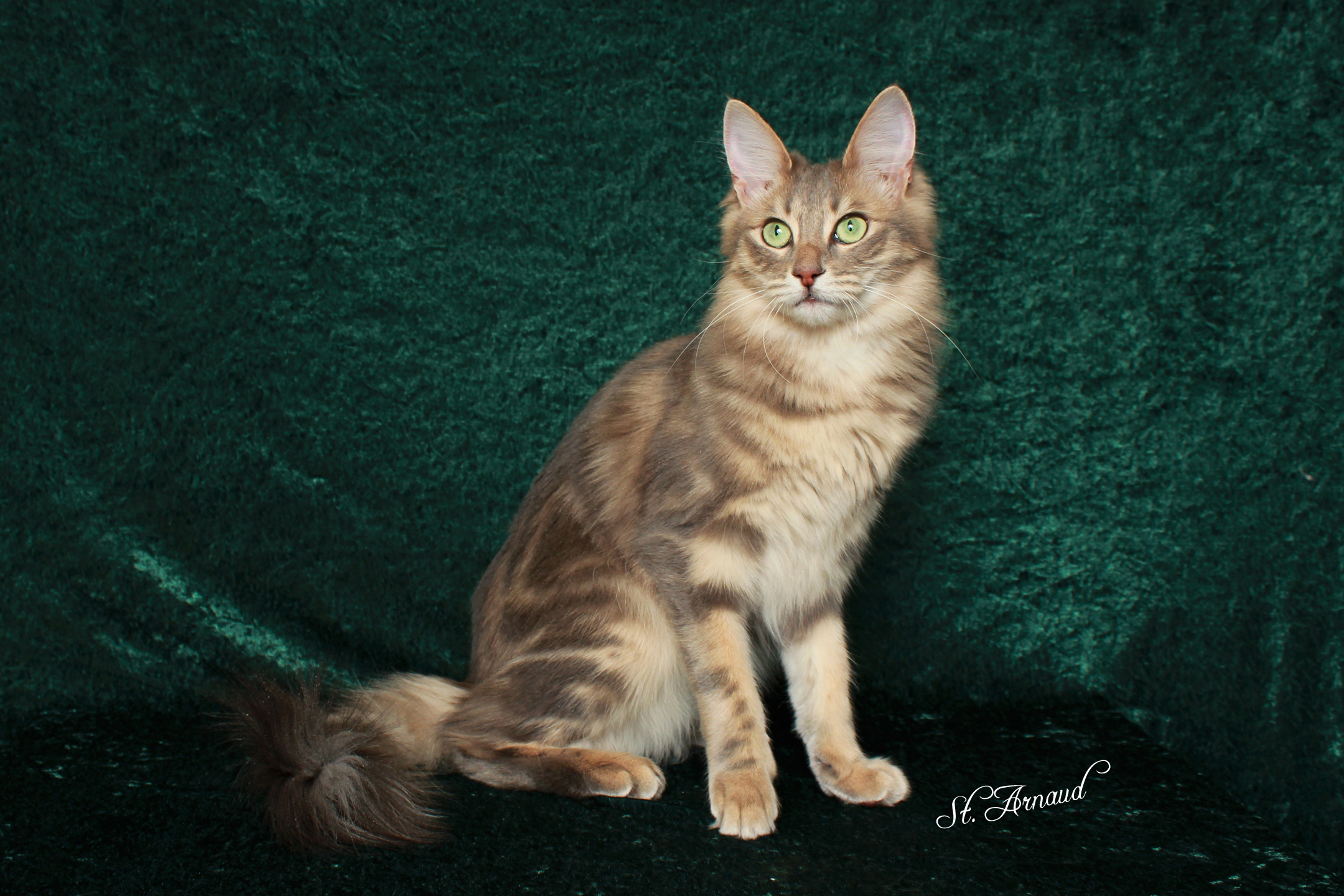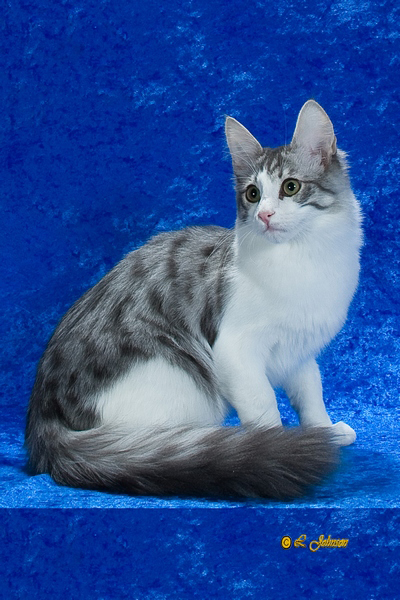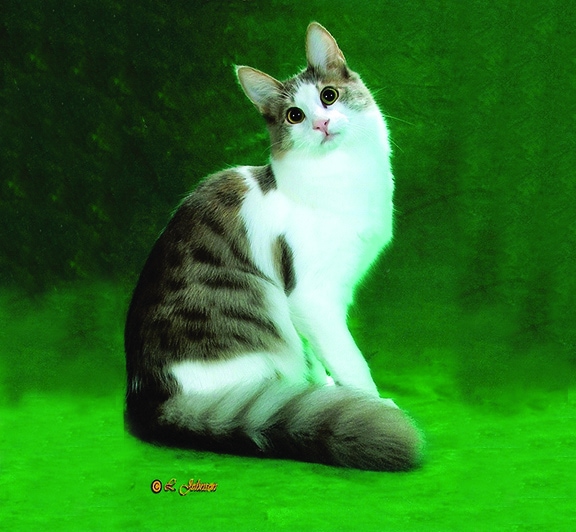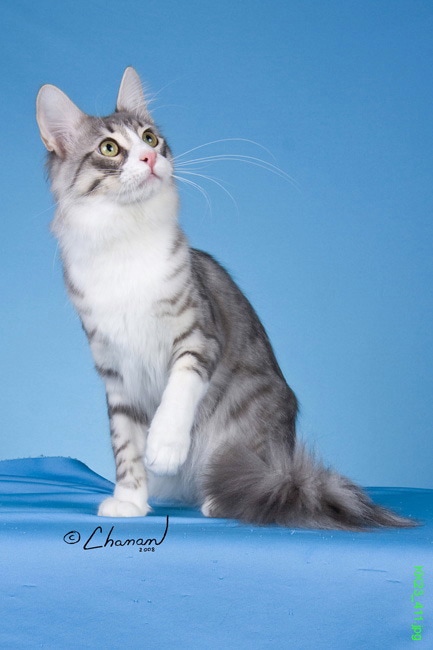The original easy-care longhair! Meet the mischievous feline ballerina in soft, silky fur.
One of the oldest natural breeds of cat, the Turkish Angora has a written history dating back to the 1600s and was the darling of French aristocracy before the French Revolution. These cats originated in the Ankara region of Turkey, hence the name. All CFA-registered Turkish Angoras must be able to trace their ancestry back to Turkish origins.Coat Type
The long, luxurious fur of a Turkish Angora has an unbelievably silky-soft texture that has to be felt to be believed. Unlike Persians, TAs are single-coated cats, meaning they have no undercoat and are not prone to matting. A quick combing two or three times a month or so is all your TA will need to stay looking beautiful.

Head, Body Type, Structure
The body of a Turkish Angora is long and graceful, with long, finely-boned legs to match and a full plumed tail. The smooth wedge of the head is characterized by almond-shaped eyes, a two-plane profile, and those large, erect “bunny-rabbit” ears that sit squarely on the top of the head. Imagine a fox gradually morphed into a cat and you will have a perfect mental picture of a TA.
While males are typically larger than females, these are not large cats. Fully grown adults tend to weigh between 7 and 10 pounds.


Personality
Playful, inquisitive and very intelligent, TAs are very “busy” cats who want to be thoroughly involved with their humans’ lives. Whatever it is that you are doing, your TA will want to help you with it, sometimes with very amusing results. They need a fairly large amount of personal space, but are capable of adapting to apartment life. They are extremely loving pets, and are among the most demonstratively affectionate of all breeds.

Colors
While Turkish Angoras were originally accepted as an all-white breed, colored Turkish Angoras were recognized in 1978 and have grown in popularity over the years. Today, approximately half of the TAs registered with CFA are colored. This may reflect the growing realization that breeding white to white means the risk of producing deaf kittens; in fact, in some countries, tests are required to ensure that a cat is sound hearing before it can be used for breeding. The idea of producing a deaf kitten is not acceptable to us, so our breeding program has focused primarily on bicolors for many years. We also breed tabbies and nonwhite solids such as blue and black.
About Folie à Deux Turkish Angoras
Formerly bred under the “Silverlock” cattery name, our Turkish Angoras have achieved five national breed wins in CFA, as well as a number of regional allbreed wins. Two of our cats have achieved national allbreed wins – the only non-white Turkish Angoras in breed history to accomplish this. We have produced over 30 TA grand champions/premiers and are responsible for six Distinguished Merit females (cats that produced five or more grand offspring). One of our national winners was also the first one-litter Distinguished Merit cat in the history of the breed.
However, we are prouder of our international reputation for sweet tempered TAs than any of these awards. When Iris first began working with the breed, back in 1989, they had a terrible reputation and were considered vicious and unpredictable. Over twenty-five years of firm hands and lots of love have helped us turn that perception around.
We work with other Turkish Angora breeders around the country, primarily Antioch (Ohio) and Magicktuffs (North Carolina) but are planning to end our Turkish Angora breeding program in early 2025 in order to focus more on Siberians and Japanese Bobtails.

